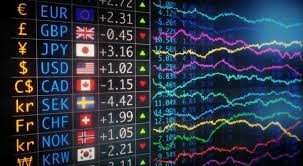
The Ultimate Guide to Forex Trading
Forex trading, also known as foreign exchange trading or currency trading, is the act of buying and selling currencies with the aim of making a profit. This market is one of the largest and most liquid financial markets in the world, with a daily trading volume exceeding $6 trillion. For those interested in entering this lucrative arena, it’s crucial to understand its fundamentals and the factors that influence currency exchange rates. For trading in specific regions, you might consider evaluating forex and trading Forex Brokers in Cambodia to find suitable platforms.
Understanding Forex Market Mechanics
The foreign exchange market operates on a global scale, connecting buyers and sellers from different corners of the world. Unlike traditional stock markets, which are limited to specific exchanges, Forex trading takes place over-the-counter (OTC) through networks of banks and financial institutions. This decentralized structure allows for trading 24 hours a day, five days a week, making it accessible to traders worldwide.
Currency Pairs
Currencies are traded in pairs, with each pair representing the exchange rate between two different currencies. The first currency in the pair is the base currency, and the second is the quote currency. For example, in the currency pair EUR/USD, the Euro (EUR) is the base currency, while the US Dollar (USD) is the quote currency. When the exchange rate rises, it means the base currency has appreciated relative to the quote currency, and vice versa.
Market Participants
The Forex market is composed of various participants, including:
- Banks and Financial Institutions: Major banks provide liquidity and facilitate transactions between different participants.
- Corporations: Companies engage in Forex trading to hedge against adverse currency movements that could impact their profits.
- Retail Traders: Individual traders engage in Forex trading seeking profit from currency fluctuations.
- Governments and Central Banks: National authorities may intervene in the Forex market to stabilize or influence their currency’s value.
Understanding Currency Fluctuations
Currency values fluctuate based on multiple factors that can be broadly categorized into economic indicators, geopolitical events, and market sentiment. Here are a few critical aspects:

Economic Indicators
Economic reports such as GDP growth rate, unemployment rate, inflation rate, and trade balance directly impact currency values. Strong economic performance often leads to an appreciation of the domestic currency, while a weak economy can lead to depreciation.
Geopolitical Events
Political stability and events such as elections, trade agreements, and conflicts can significantly impact investor sentiment and currency movements. A stable political climate often strengthens a currency, while uncertainty may lead to depreciation.
Market Sentiment
Trader perceptions and psychological factors can also drive Forex prices. Factors such as market speculation and news can lead to sharp price changes based on trader reactions to these events.
Developing a Trading Strategy
Successful Forex trading relies on a well-defined strategy. Below are some common approaches:
Technical Analysis
Many traders use technical analysis, which involves analyzing price charts and using indicators to forecast future currency movements. This method relies on historical price data and does not focus on underlying economic fundamentals.

Fundamental Analysis
Fundamental analysis involves evaluating economic indicators, news releases, and geopolitical events to determine the intrinsic value of currencies. Traders using this approach aim to identify long-term trends based on economic data.
Price Action Trading
This method focuses on the analysis of price movements over time and disregards indicators. Price action traders observe historical price behavior to predict future movements, focusing on support and resistance levels.
Risk Management
Risk management is a crucial aspect of Forex trading. Given the volatility of the Forex market, employing risk management strategies can help protect your trading capital.
Using Stop-Loss Orders
A stop-loss order is a predetermined price level at which a trader will exit a losing position. This tool helps minimize losses and protect capital, ensuring that traders do not give back too much of their profits in adverse market conditions.
Position Sizing
Proper position sizing is vital to managing risk. Traders should only risk a small percentage of their capital on a single trade, which can help mitigate losses during periods of increased volatility.
Diversification
Diversifying portfolios by trading different currency pairs can spread risk. By not putting all capital into one trade, traders can shield themselves from significant losses if one position does not perform well.
Conclusion
Forex trading can be an exciting and potentially profitable endeavor if approached with the right knowledge and strategies. Understanding market mechanics, employing sound trading strategies, and implementing effective risk management techniques are crucial steps toward becoming a successful Forex trader. Whether you are a beginner or an experienced trader, staying informed about the latest market trends and continuously improving your skills will be pivotal in navigating the dynamic world of Forex trading.
